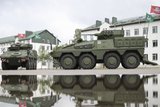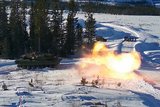BAE System's potential solution for the US Army's Joint Effects Targeting System (JETS) target location designation system programme has reached a new milestone with its Handheld Azimuth Measuring, Marking, Electro-optic imaging, and Ranging (HAMMER) precision targeting system successfully completing Critical Design Review.
With HAMMER, BAE Systems is working to provide soldiers and operators with a lightweight and cost-effective solution.
Mark Hutchins, director of Targeting Programs at BAE Systems, said: 'Precise man-portable targeting is a mission-critical capability for our dismounted soldiers. Our HAMMER solution will provide forward observers and joint terminal attack controllers with the lightweight, compact, and highly advanced system they need to be successful.'
JETS is a US Army-led, joint-interest programme with the US Air Force and US Marine Corps aimed at developing and fielding a man-portable targeting system that provides the ability to acquire, identify, precisely locate, and mark targets in all lighting and weather conditions.
BAE Systems was awarded a contract to support the JETS programme in March 2013,along with DRS.
HAMMER is designed to help soldiers distinguish friends from foes with satellite positioning and surveillance information, and allow them to rapidly receive, transmit, and coordinate targeting data. Leveraging these capabilities, the system will support the complex missions of today’s warfighter while significantly reducing collateral damage and friendly fire incidents.
Following completion of this design phase, BAE Systems will begin the programme's qualification phase in which several HAMMER systems will be manufactured and tested against JETS technical requirements throughout 2014 and early 2015. The program remains on schedule for initial JETS TLDS fielding in 2016.
























